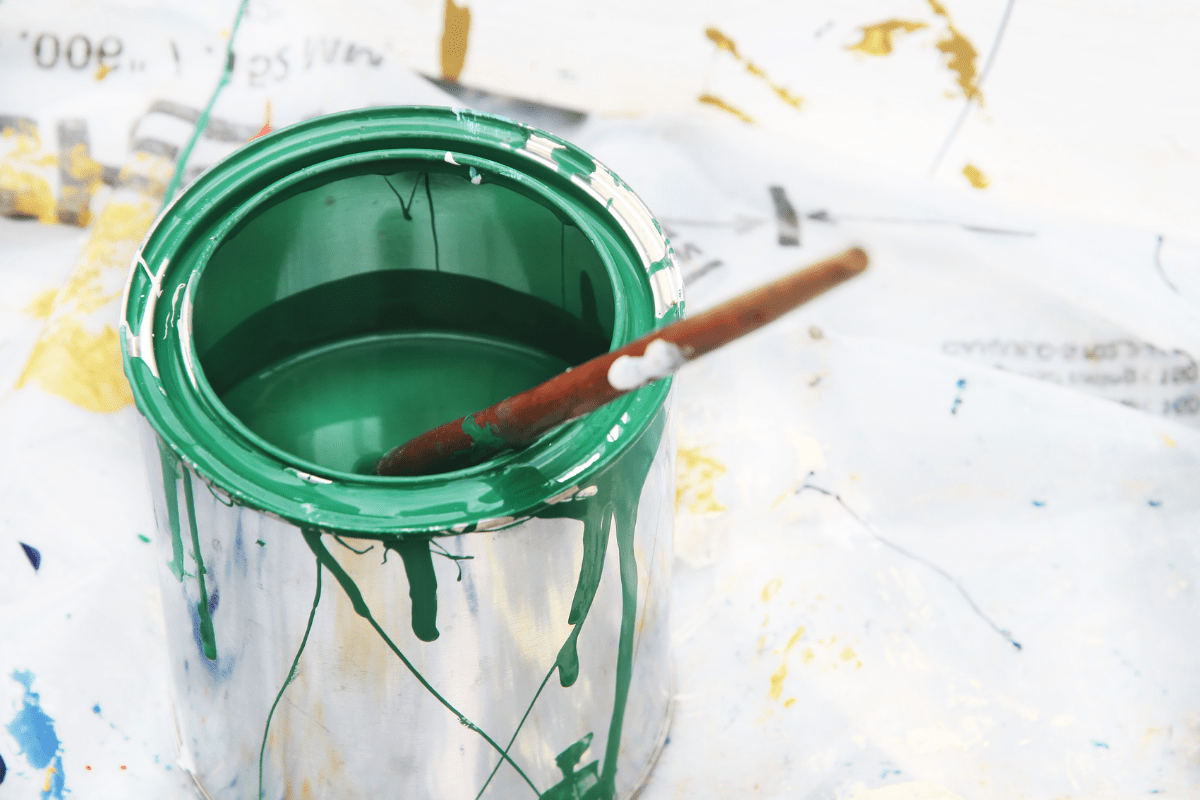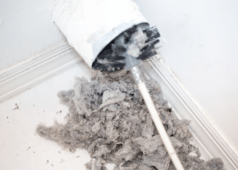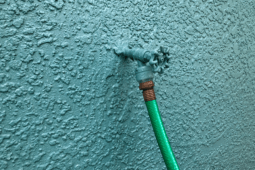How To Dispose of Paint Properly
Painting walls in your home is a common way to freshen up any room. The look and smell of a freshly painted room is something we all enjoy, but with painting comes the dreaded task of disposing unused paint. We try to budget the best we can for how much paint we will need for our projects, but sometimes we are left with extra paint we didn’t use.
Most people tend to get rid of this paint immediately, but some save it for other projects, never using it and eventually having to dispose of it. So, if you’re stuck hanging onto old paint cans and don’t know what to do with the contents inside, keep reading to find out how to safely dispose of old paint.

Note: Before you get rid of paint, you should check with your local state or municipality to see if there are set rules and guidelines as not all states are the same.
When Should You Get Rid of Old Paint?
This is the first question that usually comes to mind when deciding what to do with old paint. It’s important to know the shelf life of the paint that you are trying to get rid of. Latex paints can last up to 10 years when stored properly and in the right conditions, while oil-based paints can last up to 15 years.
Here are some quick tips for storing paint properly:
- Store in a dry place out of direct sunlight
- Store at a temperature between 60 and 80 degrees Fahrenheit (15-27 Celsius)
- Clean the edge and rim of the paint can prior to placing back on the lid
- Place a piece of plastic wrap between the lid and the opening of the paint can and tap the lid back on with a rubber mallet
- Ensure that the paint can lid is on nice and tight
Related article: Seriously, This is the Best Way to Close a Paint Can
Before choosing to get rid of old paint, remove the lid and take a good whiff of the paint. You will be able to tell immediately if the paint is rotten by the smell. If it still smells like paint, then you are good to use it. You can always save paint for another project.
Another way to check and see if your paint is ready to dispose of is by giving it a quick stir. If there are dried chunks at the bottom of the can, chances are it’s not worth using anymore. You can also grab a brush and do a quick test swipe on an old piece of cardboard. If it brushes on nice and smooth with no chunks in the paint, you are good to go.
If you have decided that you no longer want or need the paint and it is still useable, consider donating it. Places like schools, community centers, and shelters will often take used paint that’s in good condition. Just make sure you call around and ask before dropping it off.
If you do have to dispose of the paint on your own, you need to first determine which type of paint you are getting rid of — latex or oil-based.
How To Dispose of Latex Paint
The first thing you never want to do is throw away liquid paint. When paint is in liquid form and tossed in the trash, it could potentially allow toxic chemicals to contaminate the environment. In most states, you can throw solidified latex paint in the trash to be taken by the garbage pick up to the landfill.
To solidify latex paint, you can follow some of these tips:
- If there is only a small amount left, simply leave the lid open and allow the paint to dry and harden inside the can. Once fully harden and dried, place the lid on and toss in a garbage bag.
- If there is only a small amount, another option is to pour the remaining paint out onto a newspaper and let it dry, then toss the newspaper into the garbage bag.
- For larger amounts of leftover paint, you can toss cat litter into the paint can, stir, and let it air dry. Once dry, toss into a garbage bag for regular pickup.
- You can also do the above method with shredded newspaper.
- You can also purchase paint hardener from your local home improvement store.
How To Dispose of Oil-Based Paint
When disposed of improperly, oil-based paints (also known as alkyd paint) can harm sources of drinking water as they are hazardous waste. With this type of paint, it is imperative that you call your local waste management to inquire the best way to dispose of them.
In most cases, your town or city will have a hazardous waste drop off-site and you can take the paint there. Alternatively, if your town has a hazardous waste pick-up day, you would be able to leave the paint cans at the curb for pick-up.
Alternatives to Disposal
Sometimes disposal is not an option and in these cases, here are some alternatives that you may find helpful.
- Use leftover paint to apply a second coat, for touch-ups, or to paint a closet, garage, basement, or some other spot that could use a coat of paint.
- Give extra paint to someone who can use it: A friend who may need a little amount of paint for a project of even a local theatre group. Community theatre groups can often use a wide array of paints for many purposes; house rehabilitation organizations, low-income housing programs; or schools for use in art, theatre, woodworking, and construction classes.
- Return extra paint to the store. Some stores will accept unopened paints. Some paint companies have become involved in recycling paints by remixing and repackaging the paint.
- Take extra paint to a paint exchange or “swap and drop” program. Some communities have or will start permanent locations for donating and taking paint. Call your local solid waste management district or local extension agent for any programs in your community.
What do you do with leftover paint?
If you are unable to dispose of leftover paint or have a lot more left over than you thought, donate it. Places like Habitat for Humanity (in most cases) will come and pick up leftover paint from projects.
If this is not an option, refer to our guide above as to how to properly dispose of your paint or contact your local state or municipality.
How do you harden paint?
There are several ways to harden paint. You can buy a paint hardener or you can try some DIY methods. Cat litter, shredded newspaper, and wood shavings are all items you can use to harden paint. Simply stir them into your paint can and then leave it to sit with the lid off for a couple of hours.
This will harden the paint and if it’s latex, once it’s hardened, you can throw it in your trash bags — always check with your state or municipality before throwing any paint cans in the trash, though.
How do I avoid having leftover paint?
The best way to avoid having leftover paint is to take measurements prior to starting your painting project. This will help when purchasing paint to know exactly how much you need. While it’s not easy to buy exactly how much paint you will need, you can estimate it pretty close.
Most home improvement stores and paint stores have paint calculators on their websites. You can take the dimensions of your room and input them and it will tell you roughly how much paint to buy.
What happens if my stored paint has been frozen?
Sometimes we store paint outside in the garage and if we live in climates where it gets cold, paint can freeze. In the case that you think your paint froze over the winter and thawed, you can brush it on a newspaper. If there are no lumps, it hasn’t been damaged and can be used.
What if my paint has separated?
For latex paint that has separated, pour the clear liquid on top into a cardboard box lined with plastic. Mix the liquid with an equal amount of cat litter or other absorbent and let it dry. Let the leftover paint in the bottom of the can dry out using one of the above techniques.









